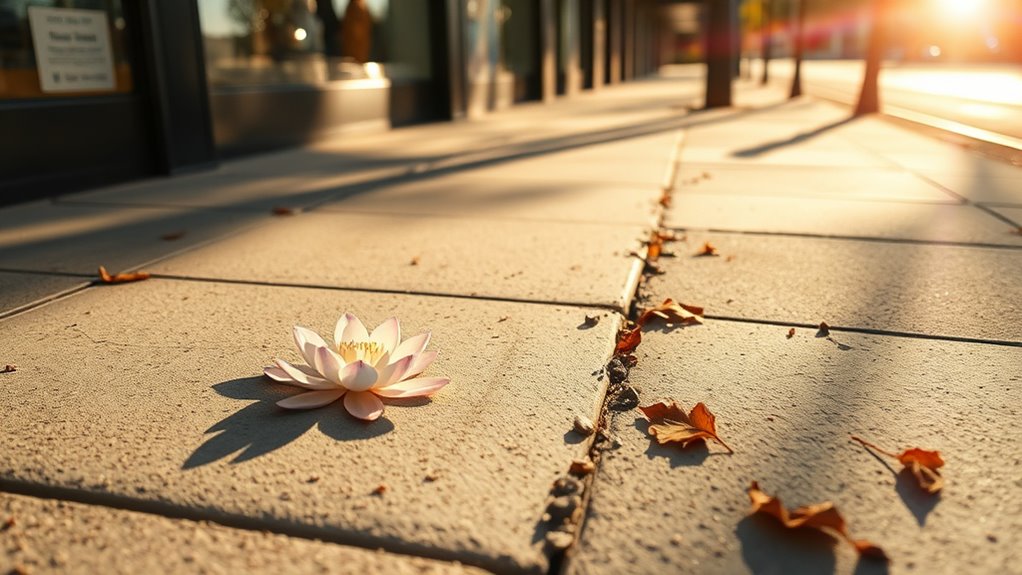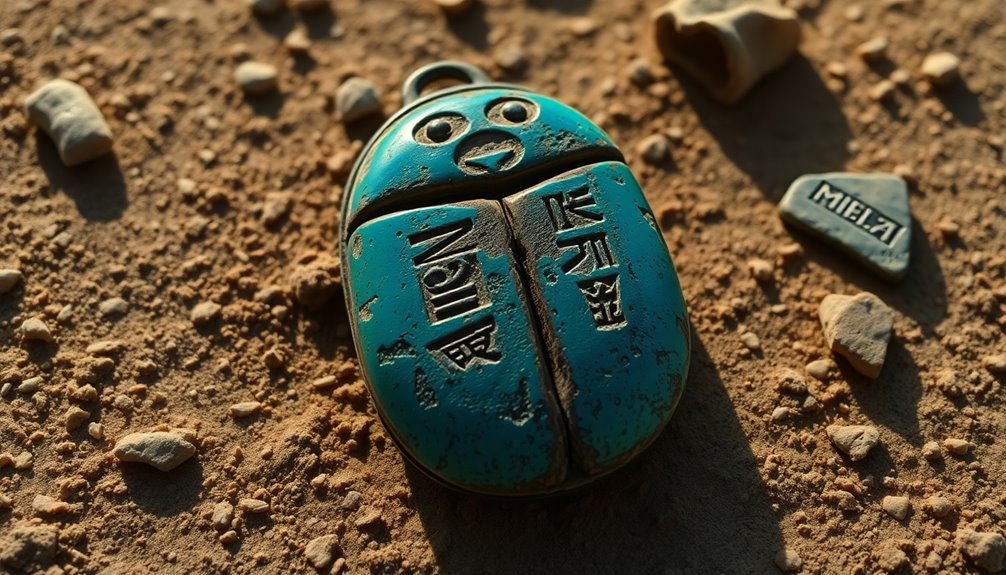Spiritual symbols appear subtly in your everyday environment, often through jewelry, artwork, nature, or common objects. They act as gentle reminders of divine energies, guidance, and cultural traditions, helping you stay connected to your inner self and higher purpose. These symbols can symbolize growth, purity, or protection, offering insight and comfort. If you pay close attention, you’ll notice how these symbols continue to reveal deeper meanings and support your spiritual journey every day.
Key Takeaways
- Spiritual symbols frequently appear in jewelry, artwork, and nature, serving as daily reminders of divine connection and personal growth.
- Common symbols like feathers, spirals, and crosses act as subtle signs or guidance from the universe or spiritual energies.
- Cultural and traditional roots enhance their significance, linking everyday encounters to deeper spiritual meanings and community beliefs.
- Symbols in daily life help elevate consciousness, promoting mindfulness and awareness of unseen spiritual dimensions.
- Recognizing these symbols fosters personal reflection, inner peace, and a sense of continuity with spiritual traditions.

Spiritual symbols serve as powerful tools that connect us to deeper meanings and divine energies. When you encounter symbols in your daily life, you’re often seeing more than just simple images; you’re witnessing representations that hold profound significance. The meaning behind symbols can vary widely, but they generally serve as visual language that communicates spiritual truths, guiding you toward insight or comfort. For example, a lotus flower might appear in your surroundings or dreams, symbolizing purity, enlightenment, and rebirth in many Eastern traditions. Recognizing these symbols isn’t just about understanding their superficial appearance; it’s about grasping the deeper message they carry, which can help you navigate life’s challenges and find inner peace.
Every spiritual symbol carries a certain cultural significance rooted in history and tradition. When you see a symbol like the Om in a meditation space, it’s more than just a decorative element—it’s a sacred sound and vibration that embodies the universe’s essence in Hinduism and Buddhism. Knowing the cultural origins of symbols enriches your understanding of their power and purpose. For instance, the cross in Christianity isn’t just a religious emblem; it symbolizes sacrifice, redemption, and divine love. Recognizing these cultural backgrounds allows you to appreciate how symbols serve as bridges between spiritual beliefs and everyday life, reinforcing faith and shared values. This cultural significance often lends symbols a sense of continuity, connecting you to centuries-old traditions and communities with shared spiritual aspirations.
When symbols appear in your environment—whether on jewelry, artwork, or nature—they often act as subtle reminders of your spiritual journey. You might see a feather and be reminded of freedom or divine guidance, or notice a spiral pattern that signifies growth and evolution. These symbols serve as signs that the universe is whispering messages tailored to your path. By understanding the meaning behind symbols and their cultural significance, you deepen your connection to the divine energies that surround you. They become more than mere images; they turn into personal touchstones, anchoring you in moments of reflection or clarity. Paying attention to these symbols helps you stay aligned with your spiritual purpose, providing inspiration and reassurance as you move through your daily life.
Additionally, being aware of the aura surrounding individuals or environments can offer insights into emotional and spiritual states, further enriching your understanding of these symbols’ significance. In essence, spiritual symbols are gateways that invite you to explore the unseen worlds within and around you. Their meanings and cultural significance aren’t just abstract concepts—they’re active tools that can elevate your consciousness and foster a sense of divine connection. Recognizing and embracing these symbols empowers you to live more mindfully, with an awareness that you’re part of a larger, interconnected spiritual tapestry.
Frequently Asked Questions
How Can I Identify Spiritual Symbols in Daily Objects?
You can identify spiritual symbols in daily objects through symbol recognition and understanding cultural symbolism. Pay attention to recurring shapes, colors, or motifs that seem meaningful or evoke a feeling. Research their significance in different cultures to deepen your awareness. Trust your intuition when you notice symbols repeatedly showing up; they may hold spiritual messages. Over time, you’ll develop a keen eye for recognizing these subtle signs around you.
Are Spiritual Symbols Universally Recognized Across Cultures?
You’ll find that spiritual symbols aren’t universally recognized, as cultural variations shape their meanings. What’s sacred in one culture might be unfamiliar or have a different significance elsewhere. Modern interpretations can also alter perceptions, making symbols more personal than universal. So, when you see symbols in daily life, consider their cultural context and how individual perspectives influence their meanings, rather than assuming they hold the same spiritual significance everywhere.
What Is the History Behind Common Spiritual Symbols?
You might think spiritual symbols just appeared out of nowhere, but their origins are rich with history. Symbols like the lotus or the cross come from ancient cultural symbolism, each carrying deep meaning. Their origins often trace back thousands of years, reflecting spiritual beliefs and practices. Ironically, what’s universally recognized today was once specific to a culture, yet now, they’re shared symbols of universal spiritual ideas.
Can Spiritual Symbols Influence My Personal Growth?
Yes, spiritual symbols can influence your personal growth by enhancing meditative practices and energy healing. When you focus on symbols like the OM or lotus, they serve as powerful reminders of your goals and spiritual journey. These symbols can deepen your meditation, helping you connect more profoundly with your inner self. As you incorporate them into your energy healing, they promote balance, clarity, and emotional resilience, supporting your overall development.
How Do I Interpret Symbols I Encounter Unexpectedly?
When you encounter symbols unexpectedly, trust your intuitive recognition to interpret them. Consider how they relate to your current feelings or situations. Use dream interpretation techniques, like journaling or meditation, to deepen your understanding. Pay attention to recurring symbols, as they often carry important messages. Your intuition guides you in deciphering their meaning, helping you gain insight and personal growth from these unexpected encounters.
Conclusion
So, next time you spot a lotus or a mandala in your coffee foam, don’t dismiss it as mere coincidence. Maybe the universe is trying to send you a cosmic wink, or perhaps just your subconscious craving a little spiritual flair. Either way, who’s to say your daily grind isn’t secretly sprinkled with divine signs? Embrace the symbols—after all, enlightenment might just be a latte art away. Cheers to finding meaning in the mundane!









